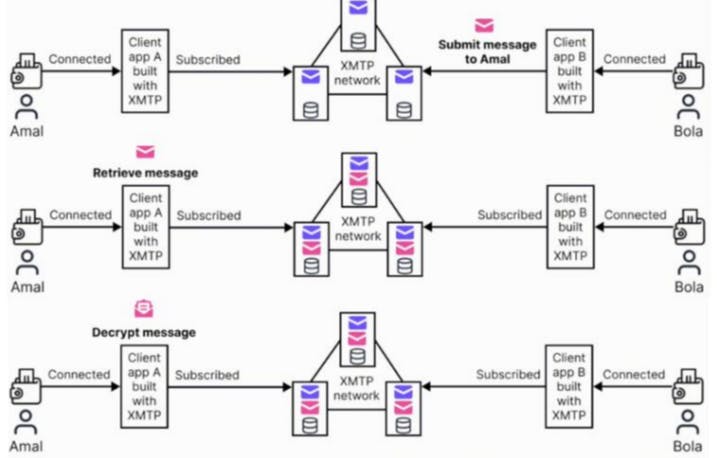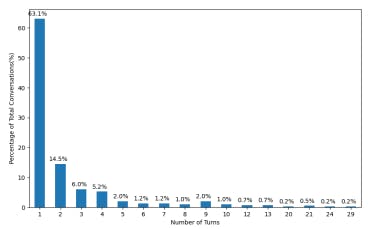Table of Links
Abstract and 1. Introduction
-
Bitcoin and the Blockchain
2.1 The Origins
2.2 Bitcoin in a nutshell
2.3 Basic Concepts
-
Crypto Exchanges
-
Source of Value of crypto assets and Bootstrapping
-
Initial Coin Offerings
-
Airdrops
-
Ethereum
7.1 Proof-of-Stake based consensus in Ethereum
7.2 Smart Contracts
7.3 Tokens
7.4 Non-Fungible Tokens
-
Decentralized Finance and 8.1 MakerDAO
8.2 Uniswap
8.3 Taxable events in DeFi ecosystem
8.4 Maximal Extractable Value (MEV) on Ethereum
-
Decentralized Autonomous Organizations – DAOs
9.1 Legal Entity Status of DAOs
9.2 Taxation issues of DAOs
-
International Cooperation and Exchange of Information
10.1 FATF Standards on VAs and VASPs
10.2 Crypto-Asset Reporting Framework
10.3 Need for Global Public Digital Infrastructure
10.4 The Challenge of Anonymity Enhancing Crypto Assets
-
Conclusion and References
11. Conclusion
Crypto assets have posed unique challenges to tax administrations throughout the world. On one hand they need to appropriately classify crypto assets as property/asset or means of payment/negotiable instrument and on the other hand address challenges due to their pseudonymous and extra-territorial nature. Tax administrations are innately designed to tax conventional means of holding and transmitting value as well as economic activity. This technologically challenging realm of economic activity creates tax design issues related to neutrality, efficiency and equity as well as their practical implementation. Policymakers would need to address the complex issues related to direct and indirect taxation of crypto assets, including issues related to the environmental costs of crypto assets, to provide clarity about their tax treatment without impeding progress or inhibiting innovation in this domain.
With ‘Crypto Winter’ slowly turning into a ‘Crypto Spring’ the revenues involved would be significant, especially for developing countries due to the large policy and compliance gaps that exist. The significant amounts involved in GST/VAT related to sales of goods and services in lieu of crypto assets as well as GST/VAT on cross border services like mining services, MEV and NFTs need urgent attention of tax administrations. This would require a policy response which is coherent and compatible with the technological bottom-lines of crypto assets and provides certainty to facilitate compliance. At the same time, they need to be conscious about the tax policy arbitrage opportunities that exist in this ecosystem, which may result in non-compliance and revenue loss. The swift pace of innovation in this field presents a formidable challenge for policymakers to effectively stay abreast to formulate prudent and practical policies. The migration of commercial activity from digital commerce in real world to virtual worlds like metaverses can fundamentally challenge the ideas on which our present tax systems are designed. In near future, tax administrations might be compelled to have a presence on various blockchains to collect the due taxes.
Capacity development, especially in the context of developing countries, must be at the core of the strategy of tax administrations to deal with this asset class. Having policymakers well versed with the technology related aspects of crypto assets, which have profound tax policy implications, can formulate appropriate policies to help realize the revenues associated with asset class. Each auditor who can accurately determine the tax liability of crypto asset owners in his/her jurisdiction can collect the fair share of taxes as well as prevent the misuse of this technology for tax evasion, bypassing capital controls and money laundering. Just as issues related to international taxation and transfer pricing remain focus areas for capacity development in many jurisdictions, similar focus needs to be adopted for the taxation related issues of crypto assets.
The inherent nature of crypto assets transcends national borders, rendering traditional tax frameworks inadequate in capturing and regulating these assets effectively. The decentralized and pseudonymous nature of blockchain technology poses formidable challenges in tracking and reporting taxable transactions. Effective exchange of taxpayer information among countries and implementation of the travel rule are indispensable for combating tax evasion and money laundering as well as ensuring compliance within the crypto ecosystem. It would also help to avoid non-taxation and double taxation of crypto assets. Without attribution of transactions to natural and legal persons even high-capacity jurisdictions might be unbale to effectively tax this asset class. As this ecosystem continues to evolve, collaborative efforts are essential to address emerging issues such as DeFi, NFTs and the metaverse. The creation of global public digital infrastructure for exchange of such information in real time like the SWIFT network, based on standardized protocols can help to mitigate many practical challenges associated with pseudonymity. Also, the issues related to anonymity enhancing crypto assets as well as services like tumblers and mixers need to be addressed as those intending to evade taxes may resort to them as avenues for tax regulatory arbitrage shrink.
References
Antonopoulos, A. M. (2019). Mastering bitcoin. O’Reilly Media.
Antonopoulos, A. M., & Wood, G. (2018). Mastering ethereum: building smart contracts and dapps. O’reilly Media.
Aramonte, S., Huang, W., & Schrimpf, A. (2021). DeFi risks and the decentralisation illusion. BIS Quarterly Review, 21.
Auer, R., & Claessens, S. (2018). Regulating cryptocurrencies: assessing market reactions. BIS Quarterly Review September.
Baer, K., De Mooij, R., Hebous, S., & Keen, M. (2023). Taxing cryptocurrencies. Oxford Review of Economic Policy, 39(3), 478-497.
Brondolo, J. (2021). Administering the value-added tax on imported digital services and low-value imported goods. International Monetary Fund.
Brunson, S. D. (2022). Standing on the Shoulders of LLCs: Tax Entity Status and Decentralized Autonomous Organizations. Ga. L. Rev., 57, 603.
Chen, C., & Liu, L. (2022). How effective is China’s cryptocurrency trading ban?. Finance Research Letters, 46, 102429.
Cong, L. W., Landsman, W., Maydew, E., & Rabetti, D. (2023). Tax-loss harvesting with cryptocurrencies. Journal of Accounting and Economics, 76(2-3), 101607.
Durovic, M. (2021). What are smart contracts?: An attempt at demystification. In Digital Technologies and the Law of Obligations (pp. 121-132). Routledge.
Falcao, T., & Michel, B. (2023). Towards a Comprehensive Cryptocurrency Income Tax policy for Countries in Africa. Available at SSRN 4658850.
Fahmy, A.F. (1997). Quantum computing. Reports on Progress in Physics, 61, 117 – 173.
Fischer, M. J., Lynch, N. A., & Paterson, M. S. (1985). Impossibility of distributed consensus with one faulty process. Journal of the ACM (JACM), 32(2), 374-382.
Gervais, A., Capkun, S., Karame, G. O., & Gruber, D. (2014, December). On the privacy provisions of bloom filters in lightweight bitcoin clients. In Proceedings of the 30th Annual Computer Security Applications Conference (pp. 326-335).
Juhász, P. L., Stéger, J., Kondor, D., & Vattay, G. (2018). A bayesian approach to identify bitcoin users. PloS one, 13(12), e0207000.
Kapsis, I. (2023). Crypto-assets and criminality: A critical review focusing on money laundering and terrorism financing. Organised Crime, Financial Crime, and Criminal Justice, 122-141.
Levi, S. D., & Lipton, A. B. (2018, May). An introduction to smart contracts and their potential and inherent limitations. In Harvard Law School Forum on Corporate Governance (Vol. 10).
Li, W., Cao, M., Wang, Y., Tang, C., & Lin, F. (2020). Mining pool game model and nash equilibrium analysis for pow-based blockchain networks. IEEE Access, 8, 101049-101060.
Daum, M., & Lucks, S. (2005). Attacking hash functions by poisoned messages: The story of Alice and her boss.
Marian, O. (2013). Are cryptocurrencies super tax havens? Mich. L. Rev. First Impressions, 112, 38.
Moringiello, J. M., & Odinet, C. K. (2022). The property law of tokens. Fla. L. Rev., 74, 607.
Nguyen, C. T., Hoang, D. T., Nguyen, D. N., Niyato, D., Nguyen, H. T., & Dutkiewicz, E. (2019). Proofof-stake consensus mechanisms for future blockchain networks: fundamentals, applications and opportunities. IEEE access, 7, 85727-85745.
Shenk, M., Van Kerckhoven, S., & Weinberger, J. (2023). The Crown, the Market and the DAO. Stan. J. Blockchain L. & Pol’y, 6, 244.
Shin, D., & Rice, J. (2022). Cryptocurrency: a panacea for economic growth and sustainability? A critical review of crypto innovation. Telematics and Informatics, 71, 101830.
Sun, W., Jin, H., Jin, F., Kong, L., Peng, Y., & Dai, Z. (2022). Spatial analysis of global Bitcoin mining. Scientific Reports, 12(1), 10694.
Wang, X., & Yu, H. (2005, May). How to break MD5 and other hash functions. In Annual international conference on the theory and applications of cryptographic techniques (pp. 19-35). Berlin, Heidelberg: Springer Berlin Heidelberg.
:::info
Author:
(1) Arindam Misra.
:::
:::info
This paper is available on arxiv under CC BY 4.0 DEED license.
:::










